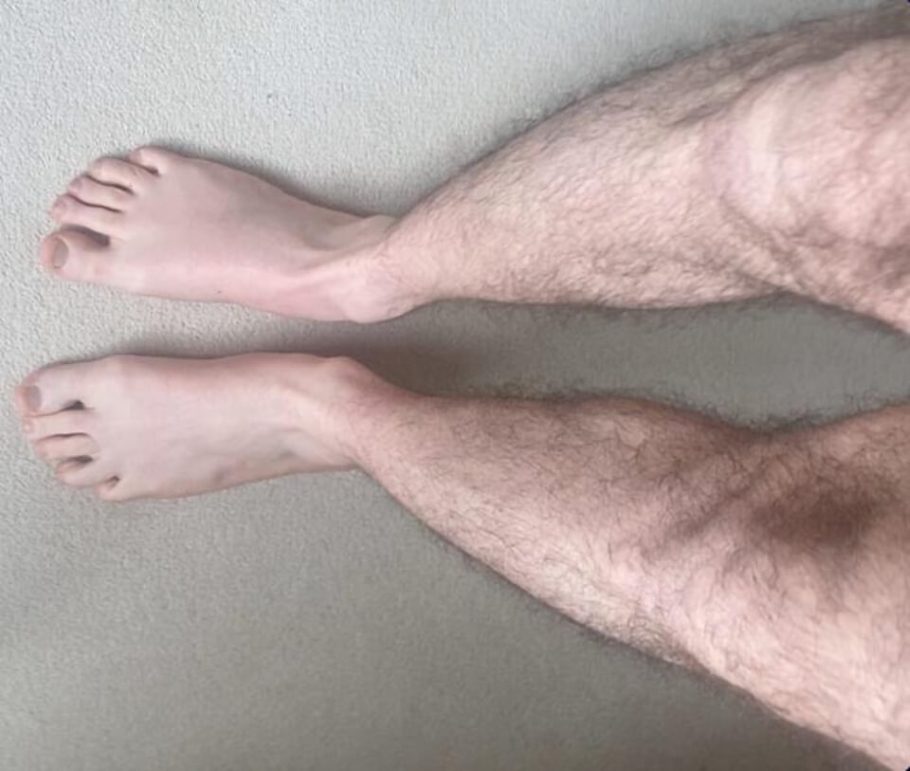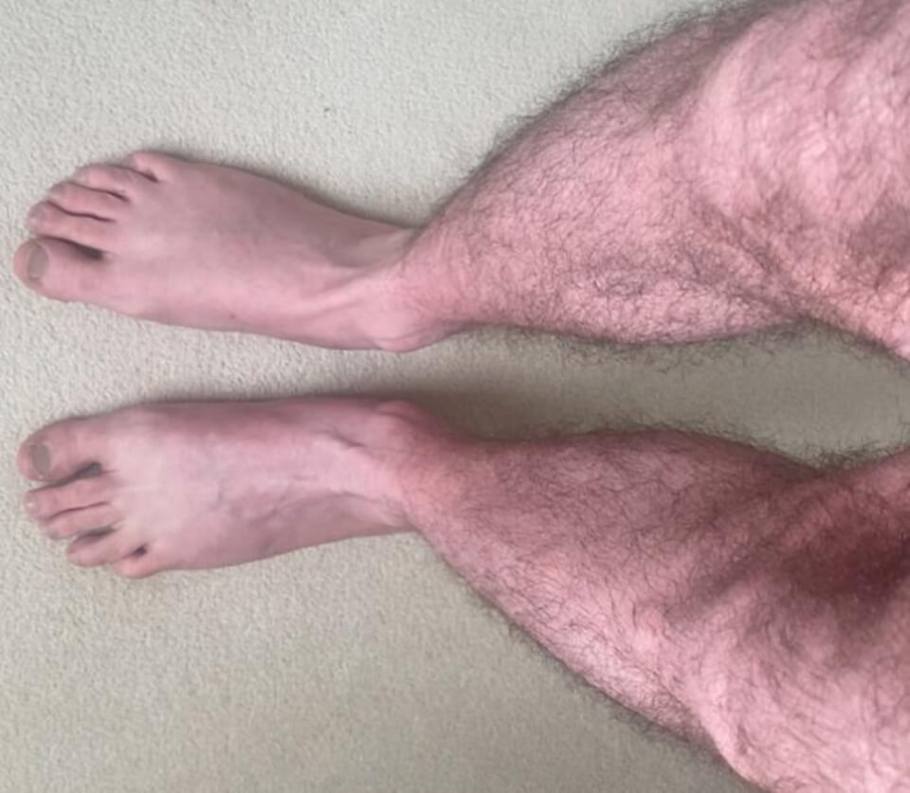Acrocyanosis Awareness: Blue Legs Symptom of Long Covid
Author: University of Leeds
Published: 2023/08/12 - Updated: 2025/03/01
Publication Details: Peer-Reviewed, Paper, Essay
Category Topic: Coronavirus Information - Academic Publications
Page Content: Synopsis - Introduction - Main - Insights, Updates
Synopsis: This scholarly paper, published in a respected medical journal, dives into a fascinating case of a 33-year-old man whose legs turned blue after standing for just 10 minutes - a rare symptom tied to long COVID. This paper discusses a case where a 33-year-old Long COVID patient experienced acrocyanosis - bluish discoloration of the legs - upon standing. Within one minute of standing, his legs reddened and progressively turned blue over ten minutes, accompanied by a heavy, itchy sensation. The discoloration subsided two minutes after sitting. This symptom appeared post-COVID-19 infection, leading to a diagnosis of postural orthostatic tachycardia syndrome (POTS), a condition marked by an abnormal increase in heart rate upon standing. The paper emphasizes the need for heightened awareness among patients and clinicians regarding dysautonomia - a dysfunction of the autonomic nervous system - as a potential underlying factor in Long COVID symptoms - Disabled World (DW).
Defining Post COVID-19 Condition (PCC)
- Post COVID-19 Condition (PCC)
Post COVID-19 Condition (PCC) is also known by several names, these include; long COVID, long-haul COVID, post-acute COVID-19, post-acute sequelae of SARS CoV-2 infection (PASC), long-term effects of COVID, and chronic COVID. Mild or moderate COVID-19 lasts about two weeks for most people. But others experience lingering health problems even after the fever and cough go away and no longer test positive for the illness. The World Health Organization (WHO) defines post-COVID-19 condition (WHO's term for long COVID) as coronavirus symptoms that persist or return three months after a person becomes ill from infection with SARS CoV-2, the coronavirus that causes COVID-19. Those symptoms can include fatigue, shortness of breath, and cognitive problems (thinking and memory).
Introduction
An unusual case of a Long Covid patient's legs turning blue after 10 minutes of standing highlights the need for greater awareness of this symptom among people with the condition, according to new research published in The Lancet.
Main Content
The patient said he had started to experience the discoloration since his COVID-19 infection. He was diagnosed with postural orthostatic tachycardia syndrome (POTS), a condition that causes an abnormal increase in heart rate on standing.
The paper, authored by Dr Manoj Sivan at the University of Leeds, focuses on the case of one 33-year man who developed with acrocyanosis - venous pooling of blood in the legs (Fig. 1).

2 minutes after standing, the patient's legs began to redden (Fig. 2) and became increasingly blue over time, with veins becoming more prominent.

After 10 minutes the color was much more pronounced (Fig. 3), with the patient describing a heavy, itchy sensation in his legs. His original color returned two minutes after he returned to a non-standing position.

Dr Sivan, Associate Clinical Professor and Honorary Consultant in Rehabilitation Medicine in the University of Leeds' School of Medicine, said:
"This was a striking case of acrocyanosis in a patient who had not experienced it before his COVID-19 infection."
"Patients experiencing this may not be aware that it can be a symptom of Long Covid and dysautonomia and may feel concerned about what they are seeing. Similarly, clinicians may not be aware of the link between acrocyanosis and Long Covid."
"We need to ensure that there is more awareness of dysautonomia in Long Covid so that clinicians have the tools they need to manage patients appropriately."
Long Covid affects multiple systems in the body and has an array of symptoms, affecting patients' ability to perform daily activities. The condition also affects the autonomic nervous system, which is responsible for regulating blood pressure and heart rate.
Acrocyanosis has previously been observed in children with dysfunction of the autonomic nervous system (dysautonomia), a common symptom of post-viral syndromes.
Previous research by Dr Sivan's team has shown that both dysautonomia and POTS frequently develop in people with Long Covid.
Dysautonomia is also seen in a number of other long-term conditions such as Fibromyalgia and Myalgic Encephalomyelitis, also known as Chronic Fatigue Syndrome or ME.
Dr Sivan said:
"We need more awareness about dysautonomia in long term conditions; more effective assessment and management approaches, and further research into the syndrome. This will enable both patients and clinicians to better manage these conditions."
The research is the latest work by the team in the field of autonomic medicine. Other developments include a home test for people with symptoms of autonomic dysfunction in conditions such as long COVID, chronic fatigue syndrome, fibromyalgia, and diabetes 1 and 2, where people experience dizziness or blackouts.
University of Leeds
The University of Leeds is one of the largest higher education institutions in the UK, with more than 38,000 students from more than 150 different countries. The University is a member of the Russell Group of research-intensive universities, and plays a significant role in the Turing, Rosalind Franklin and Royce Institutes.
Insights, Analysis, and Developments
Editorial Note:The emergence of acrocyanosis as a symptom in Long COVID patients underscores the complexity of post-viral syndromes. Recognizing such manifestations is crucial for timely diagnosis and management, especially for individuals with disabilities or chronic conditions, who may be more susceptible to autonomic nervous system dysfunctions. This case serves as a reminder for both patients and healthcare professionals to remain vigilant and open-minded when assessing unusual symptoms that may be linked to previous COVID-19 infections
- Disabled World (DW).Attribution/Source(s): This peer reviewed publication was selected for publishing by the editors of Disabled World (DW) due to its relevance to the disability community. Originally authored by University of Leeds and published on 2023/08/12, this content may have been edited for style, clarity, or brevity.